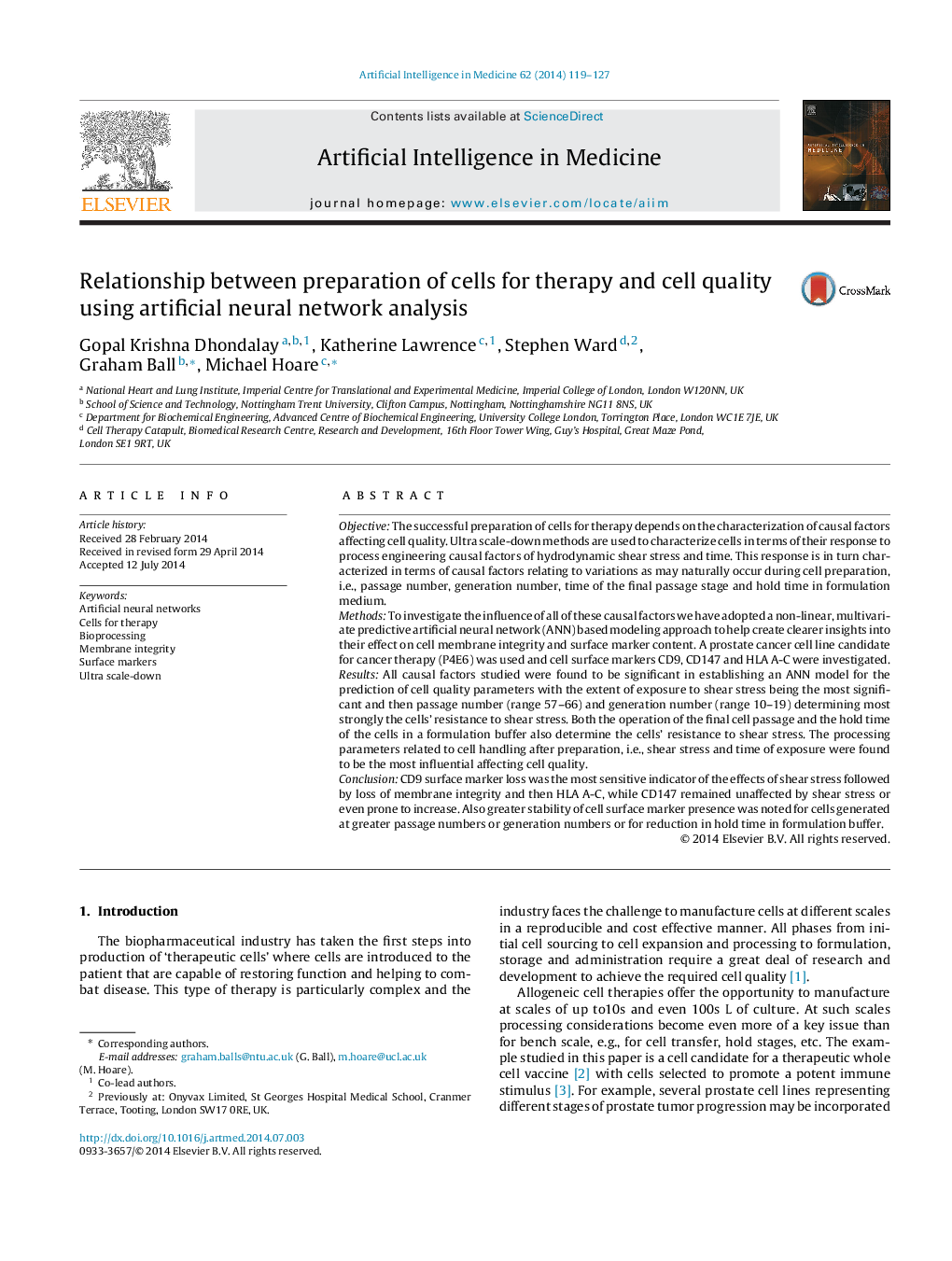| کد مقاله | کد نشریه | سال انتشار | مقاله انگلیسی | نسخه تمام متن |
|---|---|---|---|---|
| 377614 | 658803 | 2014 | 9 صفحه PDF | دانلود رایگان |
ObjectiveThe successful preparation of cells for therapy depends on the characterization of causal factors affecting cell quality. Ultra scale-down methods are used to characterize cells in terms of their response to process engineering causal factors of hydrodynamic shear stress and time. This response is in turn characterized in terms of causal factors relating to variations as may naturally occur during cell preparation, i.e., passage number, generation number, time of the final passage stage and hold time in formulation medium.MethodsTo investigate the influence of all of these causal factors we have adopted a non-linear, multivariate predictive artificial neural network (ANN) based modeling approach to help create clearer insights into their effect on cell membrane integrity and surface marker content. A prostate cancer cell line candidate for cancer therapy (P4E6) was used and cell surface markers CD9, CD147 and HLA A-C were investigated.ResultsAll causal factors studied were found to be significant in establishing an ANN model for the prediction of cell quality parameters with the extent of exposure to shear stress being the most significant and then passage number (range 57–66) and generation number (range 10–19) determining most strongly the cells’ resistance to shear stress. Both the operation of the final cell passage and the hold time of the cells in a formulation buffer also determine the cells’ resistance to shear stress. The processing parameters related to cell handling after preparation, i.e., shear stress and time of exposure were found to be the most influential affecting cell quality.ConclusionCD9 surface marker loss was the most sensitive indicator of the effects of shear stress followed by loss of membrane integrity and then HLA A-C, while CD147 remained unaffected by shear stress or even prone to increase. Also greater stability of cell surface marker presence was noted for cells generated at greater passage numbers or generation numbers or for reduction in hold time in formulation buffer.
Journal: Artificial Intelligence in Medicine - Volume 62, Issue 2, October 2014, Pages 119–127
